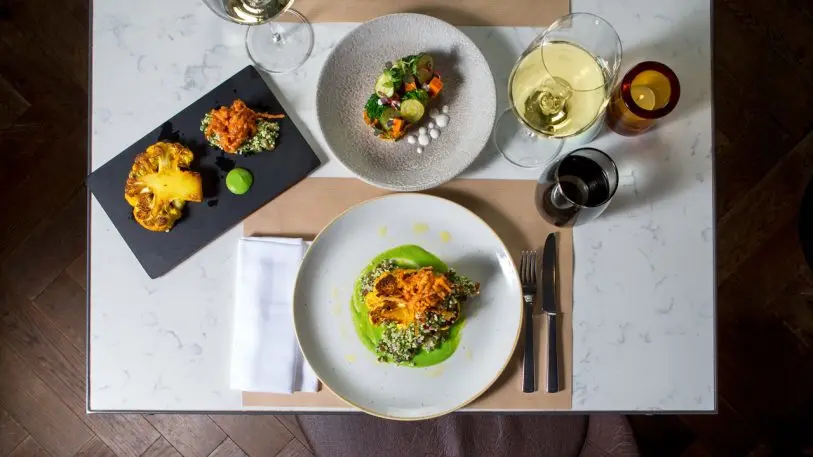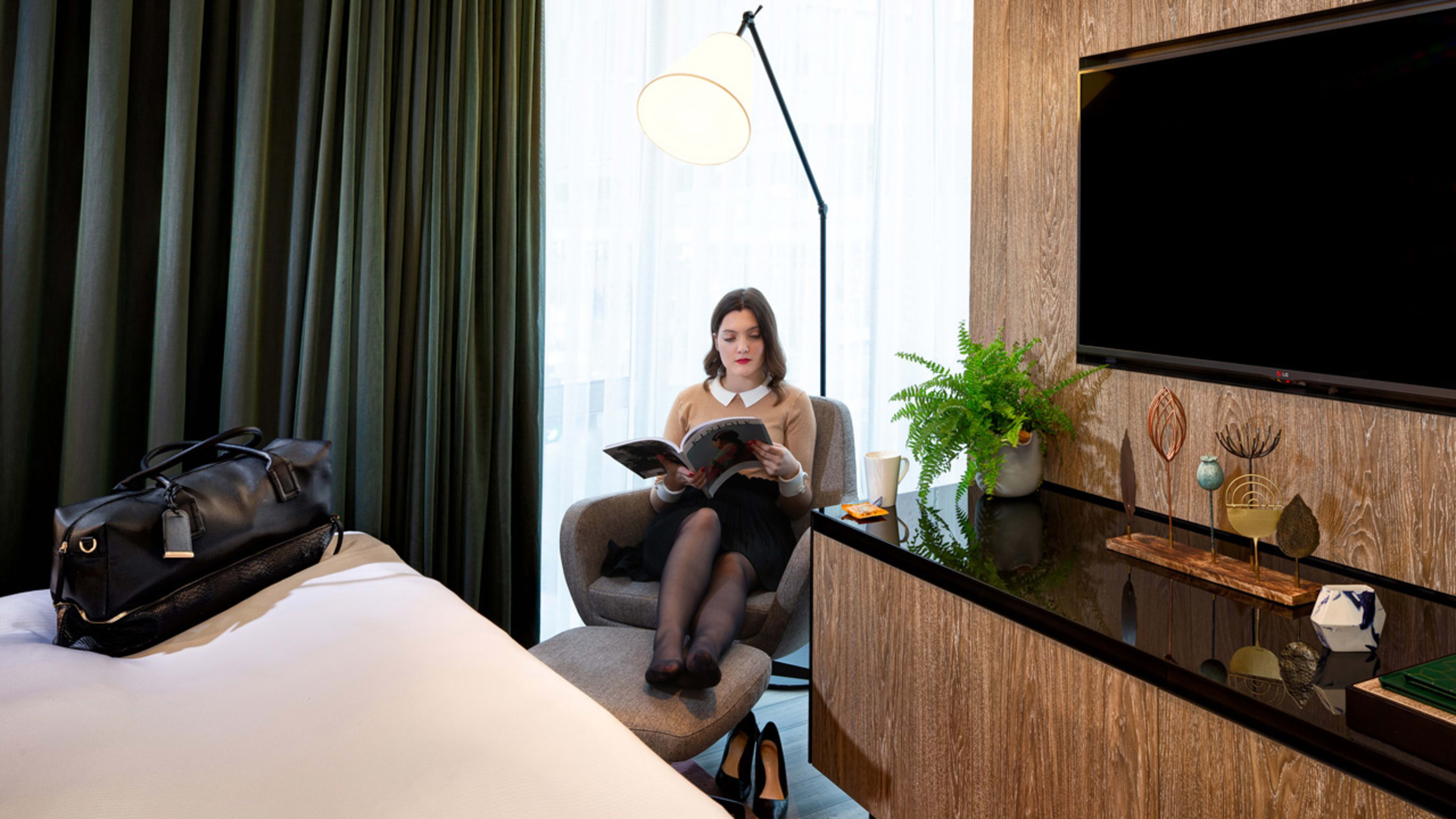It looks like your typical hip hotel room, with rich fabrics and finishes, Edison bulbs, and tropical prints. But unlike most hotel rooms, this suite at the Hilton London Bankside, created by experience design studio Bompas & Parr (B&P), is completely vegan, from the furnishings to the room service.
Now, eating vegan isn’t easy, but it’s only when you start to read labels that you really learn how difficult it can be. Take McDonald’s fries. They appear to be simple potatoes, but in reality, they are flavored with beef fat. (Delicious, delicious beef fat.) So to truly be vegan, you have to be constantly vigilant inside an industrial food complex that subsidizes animal products instead of veggies.

“The main challenge was searching for interesting materials that were not only vegan, but sustainable and environmentally friendly,” says studio cofounder Sam Bompas. “We focused on what is important to vegan culture, steering away from synthetic materials and focusing on botanical formed, future materials.” In other words, B&P couldn’t do what much of the fashion industry did years ago by embracing plastics instead: releasing pleather jackets and handbags and rebranding them “vegan leather.”

From a design standpoint, B&P didn’t want to use Piñatex as a leather alternative–the textile equivalent to Beyond Meat–but to celebrate the product in its own right as a luxurious fabric that was proudly sourced from fruit. “We took inspiration from the geometry of the pineapple when designing the bespoke mirrors and magazine display,” Bompas says.

Given that veganism is on the rise in food, it seems natural to assume that, with the proper awareness–and product options on the market–it could be on the rise in home furnishings, too. In fact, even though it’s far from the cheapest option, natural wood flooring still outsells vinyl and tile alternatives in housing. As far as I’m concerned, let’s bring on the pineapples next.
Recognize your brand’s excellence by applying to this year’s Brands That Matter Awards before the early-rate deadline, May 3.









